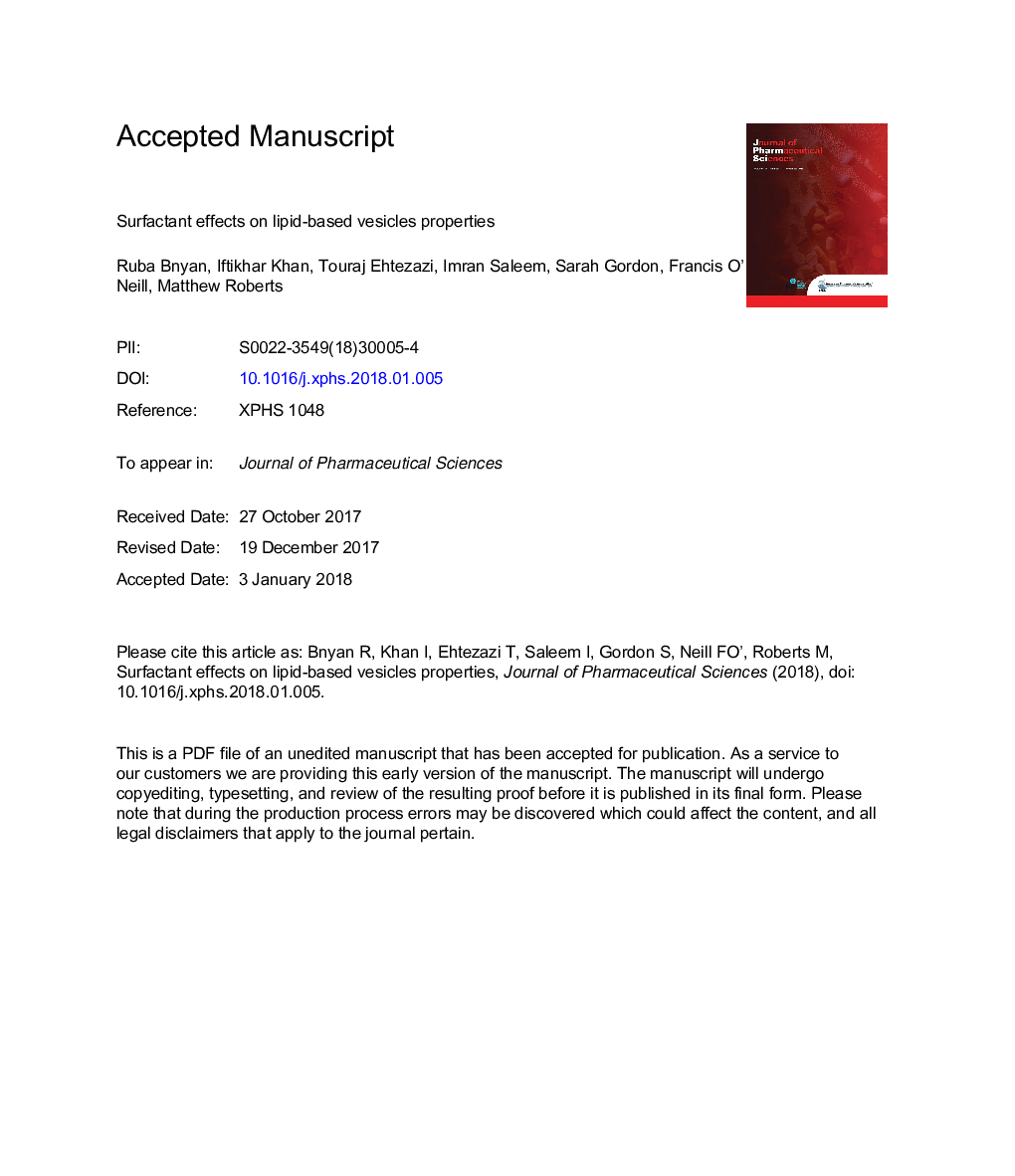| Article ID | Journal | Published Year | Pages | File Type |
|---|---|---|---|---|
| 8513272 | Journal of Pharmaceutical Sciences | 2018 | 27 Pages |
Abstract
Understanding the effect of surfactant properties is critical when designing vesicular delivery systems. This review evaluates previous studies to explain the influence of surfactant properties on the behavior of lipid vesicular systems, specifically their size, charge, stability, entrapment efficiency, pharmacokinetics, and pharmacodynamics. Generally, the size of vesicles decreases by increasing the surfactant concentration, carbon chain length, the hydrophilicity of the surfactant head group, and the hydrophilic-lipophilic balance. Increasing surfactant concentration can also lead to an increase in charge, which in turn reduces vesicle aggregation and enhances the stability of the system. The vesicles' entrapment efficiency not only depends on the surfactant properties but also on the encapsulated drug. For example, the encapsulation of a lipophilic drug could be enhanced by using a surfactant with a low hydrophilic-lipophilic balance value. Moreover, the membrane permeability of vesicles depends on the surfactant's carbon chain length and transition temperature. In addition, surfactants have a clear influence on pharmacokinetics and pharmacodynamics such as sustaining drug release, enhancing the circulation time of vesicles, improving targeting and cellular uptake.
Keywords
Related Topics
Health Sciences
Pharmacology, Toxicology and Pharmaceutical Science
Drug Discovery
Authors
Ruba Bnyan, Iftikhar Khan, Touraj Ehtezazi, Imran Saleem, Sarah Gordon, Francis O'Neill, Matthew Roberts,
